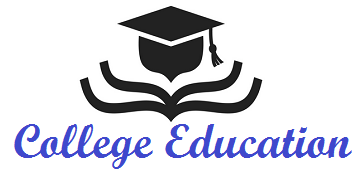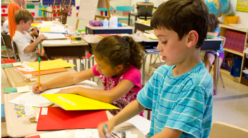Gone are the days when the nearest school was the only one possible for his child. Public establishments compete fiercely with specific programs and varied fields of study. Even in primary!
Skeptical about the quality of the elementary school in her neighborhood, Séverine Boitier, from Montreal, visited many schools during the last year of daycare for her daughter, Philomène. “I didn’t mean to be wrong! The private sector tempted her, but the tuition fees being too high for her budget, she finally opted for the international public school Saint-Barthélémy, in the Saint-Michel district, where the children are handpicked after a test. admission. At five years old.
What parent hasn’t been plagued by doubt when choosing a school? Shouldn’t he, like Séverine Boitier, have had his child take tests so that he could enter an international or private school? Shouldn’t we have tried an alternative school?Gone are the days when we didn’t ask ourselves questions and when the neighborhood school was the only one possible. Today, especially in large urban centers, we are spoiled for choice – starting in kindergarten! It has even become in some cases a real headache. Of the 3,300 schools in Quebec, about 400 offer one or more specific programs, which makes a range of more than 700 different programs, according to the Ministry of Education.
At the elementary level, programs focused on languages (in particular intensive English teaching, offered from the 3rd year) are the most popular; in secondary school too, with the arts (mainly music option), international education programs and sports. However, who wants to get there is not allowed: imitating the best private establishments, more and more public schools are selecting their students – according to the last report card, an admission test or both. This is a trend noted by Marie-Josée Legris, general manager of the consulting firm Brisson, Legris et Associés, which designs selection exams for schools and assesses 25,000 students a year: its clientele, who, in 1970s, consisted only of private colleges, is growing at 10% per year.
The proliferation of programs, which appeared in the public network over the past fifteen years, is directly linked to competition from private establishments, explains Jocelyn Berthelot, education researcher at the Centrale des unions du Québec (CSQ), which carried out a study on the subject. “Public schools saw it as a way to curb the exodus of their students to the private network. »
These measures are all the more necessary as the numbers dwindle – due to the declining birth rate. Since their funding is linked to the number of enrolments, the establishments compete with each other to have as many as possible. Competition rages not only between the private and public networks, but also between public schools. “A question of survival”, notes the Superior Council of Education in an opinion delivered to the Ministry of Education last January.
The selection of students, which empties other schools – or other classes of the establishment – of their best elements, arouses criticism, in particular from the CSQ. “We have nothing against special programs, which can be very motivating for students,” says Jocelyn Berthelot. But they must be accessible to everyone. In a class, good students are locomotives. If they are removed, how can the train move forward? »
Due both to cream skimming (selection of the best students) and to the special path reserved for those with learning difficulties, as is practiced in many high schools, it is sometimes barely 25% of students who follow the normal program, deplores Antoine Baby, researcher at the Center for Research and Intervention on Academic Success at Laval University. “The teachers have a lot of difficulty motivating them. Partitioning children is the opposite of real life. »
Maybe. But the parents are asking for more. According to the Superior Council of Education, more and more of them are calling for “better supervision of students, diversified training and higher academic performance requirements”. “They have become well-informed consumers who want à la carte service,” confirms Louise Godin, principal of La Camaradière high school in Quebec City, where more than a third of the 1,400 students are enrolled in a specific program (swimming, arts -studies in symphonic music, computer science, etc.).





